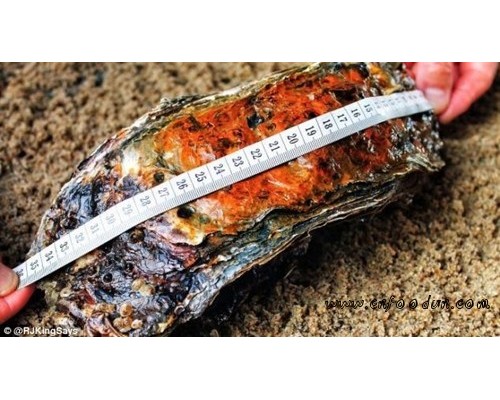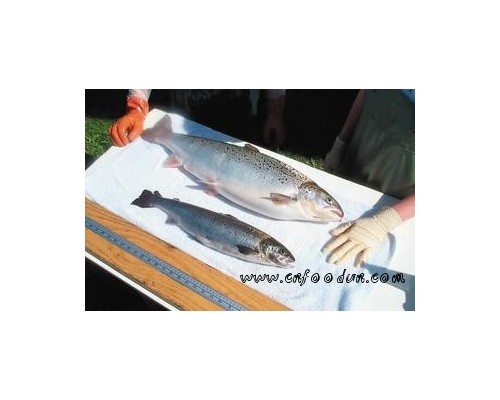食品伙伴网报道,据食品导航网(www.foodnavigator.com)消息,一个来自澳大利亚的最新研究表明,青少年多动症可能与西方的饮食模式(往往是高脂肪及饱和脂肪酸,精制糖和钠盐)有关。
多动症(ADHD),在以前的研究中就有很多针对饮食的研究。在英国南安普顿大学公布了人造色素与多动症之间的关系后至今,这三年内,普遍对人造色素的关注度较高。一些研究还调查了ω- 3脂肪酸在改善儿童行为方面的潜在作用。
这项研究发表于Journal of Attention Disorders杂志,研究者对1800名青少年进行了跟踪调查,并把他们的饮食分为“健康模式”和“西方模式”。“健康”饮食的特点是:新鲜水果和蔬菜、全谷类和鱼摄入量高,并且ω- 3脂肪酸、叶酸和纤维的摄入也较高。而“西方”饮食的特点是:外卖食品、糖果、加工、油炸和精制食品,而且往往摄入更多的脂肪,饱和脂肪酸,精制糖和钠盐。
研究发现,采用西方模式饮食习惯的青少年患上多动症的风险比采用健康模式饮食的要高一倍。
“我们研究了具体的食品,多动症的诊断与饮食有关,例如外卖食品、加工肉类、红肉、高脂肪乳制品、糖果。”奥迪博士说。
脂肪和营养物质?
奥迪解释,西方饮食可能无法提供最好的脂肪酸,而Ω- 3脂肪酸丰富的饮食会有利于精神健康以及优化大脑功能。“这也可能是西方膳食模式并没有提供足够的可用于脑功能,尤其是关注和集中所需的基本营养素。”她说。
奥迪没有否定的色素和其他添加剂可能产生的影响 - 也有可能是多动症与不良的饮食选择的恶性循环。
“这也可能是冲动,这是多动症的一个特征,当饥饿时导致选择不健康的饮食如快餐...”这是一个跨领域的研究,所以我们不能肯定是否有不良的饮食习惯导致多动症,还是多动症导致不良的饮食选择和渴望。”奥迪说。
研究人员表示,需要更多的研究来揭示所观察到现象的背后联系。
本文由食品伙伴网编译整理,目的在于传递更多的信息,内容仅供参考,以国外原文报道为准。
【相关阅读】
研究发现杀虫剂易导致儿童多动症 其最大可能来源是农产品和室内残留
研究显示食品添加剂会致儿童多动症
欧盟多家公司自愿禁用与多动症有关的色素
原文地址:http://www.foodnavigator.com/Science-Nutrition/ADHD-could-be-linked-to-diet-Cohort-study
原文报道:
ADHD could be linked to diet: Cohort study
By Jess Halliday, 30-Jul-2010
A new study from Australia has suggested that ADHD in adolescents could be linked to Western diets, which tend to be high in total fat, saturated fat, refined sugar and sodium.
ADHD – attention deficit hyperactivity disorder – has previously been the subject of dietary inquiry. There has been particular attention in the last 3 years to some artificial food colourings, after a study at Southampton University in the UK reported a link between cocktails of colours and hyperactivity in kids. Some research has also investigated the potential role of omega-3 fatty acids in improving childrens’ behaviour.
The new study, from Perth's Telethon Institute for Child Health Research and published in the Journal of Attention Disorders, looked at the dietary patterns of 1800 adolescents from the long-term Raine Study and classified diets into 'Healthy' or 'Western' patterns. The Raine study has been tracking the cohort of inpiduals in Western Australia since their birth in 1989.
The ‘Healthy’ diet was characterised by high intake of fresh fruit and vegetables, whole grains and fish, and tended to be higher in omega-3 fatty acids, folate and fibre.
The ‘Western’ diet was characterised by a tendency towards takeaway foods, confectionary, processed, fried and refined foods, and tended to be higher in total fat, saturated fat, refined sugar and sodium.
Led by Dr Wendy Oddy, the team looked at the dietary patterns amongst the adolescents and compared the diet information against whether or not the adolescent had received a diagnosis of ADHD by the age of 14 years.
115 adolescents had been diagnosed with ADHD – 91 boys and 24 girls.
“We found a diet high in the Western pattern of foods was associated with more than double the risk of having an ADHD diagnosis compared with a diet low in the Western pattern, after adjusting for numerous other social and family influences,” Dr Oddy said.
“When we looked at specific foods, having an ADHD diagnosis was associated with a diet high in takeaway foods, processed meats, red meat, high fat dairy products and confectionery,” Dr Oddy said.
Fats and nutrients?
In an attempt to explain the observations, Oddy said the Western diet may not provide the best fatty acid profile, and that an omega-3 rich diet could be better for mental health and optimal brain function.
“It also may be that the Western dietary pattern doesn't provide enough essential micronutrients that are needed for brain function, particularly attention and concentration,” she said.
Oddy did not discount the possible influence of colours and other additives – nor that there could be a vicious circle between ADHD and poor dietary choices.
“It may also be that impulsivity, which is a characteristic of ADHD, leads to poor dietary choices such as quick snacks when hungry… “This is a cross-sectional study so we cannot be sure whether a poor diet leads to ADHD or whether ADHD leads to poor dietary choices and cravings,” Oddy said.
The researchers say more studies are needed to uncover what is behind the observed link.







